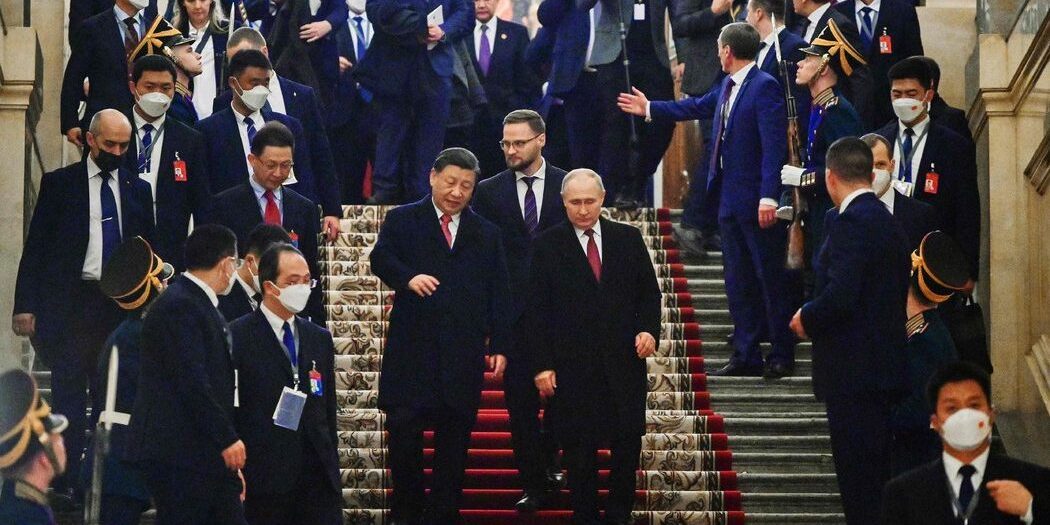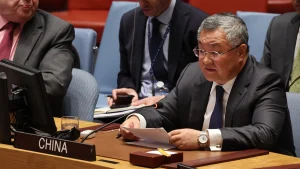BRICS Summit: the Highlight and Expectation

On Aug. 24, during a special press conference of the 15th BRICS Summit, it was announced that Saudi Arabia, Egypt, the UAE, Argentina, Iran, and Ethiopia officially joined the BRICS family. This announcement came on the heels of an earlier statement by Naledi Pandor, South Africa’s Minister of International Relations and Cooperation, on Ubuntu Radio. She confirmed that the existing BRICS members reached a consensus about this expansion, and that a document outlining the principles and procedures for membership evaluation was approved.
The inclusion of new members reflects the widespread appeal of BRICS to developing countries. It reinforces the idea that BRICS is not an exclusive club but an inclusive platform committed to win-win cooperation. Specifically, it underscores the group’s role in championing multilateralism and South-South cooperation. This expansion, which has captured global attention, stands out not only as the highlight of the Summit but also as a significant milestone in BRICS’ evolution.
1. Amid escalating economic challenges, the timing of BRICS expansion is apt
Compared to its early days, only China and India from BRICS have shown a consistent performance, while the economic momentum of the other members has waned. First, Russia’s economy is in a bind. Following the outbreak of the Ukraine crisis, Russia, burdened by Western sanctions, has witnessed a notable drop in its oil and gas revenue. The ruble saw significant devaluations against the dollar, pushing Russia further to the periphery of the global economy. While Russia’s economy may seem robust on the surface, it is largely propped up by its military-industrial sector. This year alone, the Central Bank of the Russian Federation has revised down its economic projections several times, each one grimmer than the previous, suggesting a stark difference between the actual economic situation and Moscow’s estimates.
Second, South Africa’s economy looks bleak. A combination of policy missteps, governance shortcomings, and corruption issues has resulted in a significant underinvestment in infrastructure over the past 15 years. The country has witnessed a marked brain drain along with persistently high levels of unemployment, inflation, and crime. Data from Statistics South Africa shows that the official unemployment rate for the second quarter of 2023 was at 32.6%, with the youth unemployment count (ages 15 to 34) declining to 4.7 million, which was 131,000 less than the previous quarter.
However, based on a broader definition of unemployment that covers those who disincline to seek jobs, 42.1% of South Africans are without jobs. While these figures represent a slight improvement from Q1, the situation remains precarious. In fact, as early as 2013, South Africa was overtaken by Nigeria as the continent’s largest economy. Today, South Africa has been relegated to a developing country, though it was once considered the only developed country in Africa. In June 2023, the International Monetary Fund (IMF) warned that without urgent reforms, South Africa’s economy might face zero growth this year, with prospects of further decline.
Third, Brazil’s economy is languishing. Over the past decade, the country’s annual GDP growth has been an average of 0.6%, marking 10 years of significant regression, with the GDP per capita plummeting from USD 11,300 in 2010 to under USD 8,000. According to the UN report, “State of Food Security and Nutrition in the World 2023,” between 2020 and 2022, approximately 10.1 million Brazilians faced hunger. Although this number has decreased slightly from previous years, those affected by food insecurity in Brazil increased to 70.3 million, roughly a third of its total population.
Fourth, China’s economy has also slowed down. Despite a positive long-term trend, China’s economy has felt the repercussions of the COVID-19 pandemic and Western efforts to disrupt or even sever supply chains. While external demand has contracted, domestic demand has not adequately filled the void. Rising unemployment rates and a contracting real estate market further exacerbate the situation, and pivotal sectors are getting vulnerable. All these factors have cast longer shadows over the economic outlook.
In such a context, the BRICS platform has revitalized itself through the timely addition of new members. This expansion allows BRICS members to draw on each other’s comparative advantages, facilitate South-South cooperation, and better address various challenges and risks. It also enables BRICS to play a more significant role in global politics, economics, and security, thereby promoting diversified and inclusive development and fostering a new form of international relations featuring mutual respect, fairness, and justice.
2. BRICS members need to further enhance mutual trust
Before the summit, there were concerns about the viability of BRICS expansion. Word had it that India and Brazil were “opposed to expansion,” and that Russia imposed strict prerequisites for it. These were not mere baseless rumors. Actually, while all five BRICS members showed interest in expansion, they had differing views on “how.” The most unpredictable factor was India. As the largest economy within the BRICS group, China has consistently advocated for swift expansion to counteract the marginalization of developing countries in international affairs and promote a diversified world. India, on the other hand, has expressed reservations due to concerns that China might use the BRICS platform to advance China-centric agendas like the Belt and Road Initiative and Global Development Initiative. This could potentially reposition BRICS as a counterweight against the U.S. and the G7 and diminish India’s role within the group.
This is quite understandable. After all, the “dragon-elephant rivalry” has long been a hot topic in India. The Modi administration also attempted to use Russia as a counterweight against China’s rise. However, after the Ukraine crisis broke out, China-Russia mutual trust has been described as one that has “no ceiling,” India’s strategy was obviously unviable. Consequently, India has been strengthening its ties with the U.S. in search of greater Western support while striving to maintain a certain level of “strategic autonomy.”
So, it is hardly surprising that US National Security Advisor Jake Sullivan called BRICS a “very diverse collection of countries…with differences of view on critical issues.” Jim O’Neill, the “Father of BRICS,” also noted that a primary immediate challenge for BRICS is “the lack of cooperation between China and India,” and that “China and India rarely agree on anything.” Their reluctance to get closer and cooperate hinders BRICS from playing a more prominent role on the global stage.
Frankly, the intrinsic tension within BRICS is not likely to vanish with mere expansion in the foreseeable future. For BRICS to truly thrive, its members must continue to build trust, focusing on the bigger picture and managing their differences appropriately. Only by doing so can they commit themselves to upholding world peace and security, promoting fairness and justice, fostering mutual growth while protecting their own interests, and jointly addressing global challenges.
3. BRICS expansion helps accelerate the de-dollarization process
Currently, BRICS encompasses 26.46% of the world’s land surface with a total population of 3.24 billion, which accounts for 41.93% of the global population. In 2005, the collective GDP of the five BRICS members made up less than 10% of the world’s total. However, by 2021, this figure surged to 25.24% (equivalent to 60% of the G7’s GDP). In terms of purchasing power parity (PPP), BRICS accounts for 31.5% of the global economy, outstripping the G7’s 30.4%. This positions BRICS as a primary engine of global GDP growth.
On the other hand, BRICS is underrepresented within the global financial system. As of 2022, BRICS only held 14.06% of voting rights in the World Bank and 14.15% of total shares in the IMF, disproportionate to its global economic stature. For years, the U.S. has weaponized the dollar and its payment systems, frequently using financial sanctions to pursue political aims. Such actions have compromised the principles of market integrity, casting doubts on the stability and trustworthiness of the international financial system.
The six recently added countries are among the most representative emerging markets in the developing world. With their inclusion, BRICS’ share in the global economy is set to grow, which in turn will amplify the call for international financial reform. Already, there is a renewed push for a BRICS common currency to challenge the dominance of the dollar.
On the eve of the Summit, Anil Sooklal, South Africa’s Ambassador-at-large for Asia and BRICS, revealed in an interview that BRICS leaders would explore expanding the use of local currencies for trade between BRICS members, with a focus on the establishment of a unified payment system. He also mentioned that the Summit might consider setting up a technical committee to examine the feasibility of a “common currency.”
Unexpectedly, the XV BRICS Summit Johannesburg II Declaration only encourages BRICS members and their trade partners to use local currencies in international trade and financial dealings. It also tasks “the Finance Ministers and/or Central Bank Governors, as appropriate, to consider the issue of local currencies, payment instruments and platforms,” but omits any reference to the widely anticipated subject of a common currency. This offers insight into the broader trajectory of BRICS’ endeavors to move away from the dollar.
For BRICS, introducing a “single currency” similar to the Euro might be the most effective way to expedite de-dollarization. However, reaching this milestone is no mean feat. Given their diverse political, economic, and geostrategic landscapes, none of the BRICS members has yet shown an inclination to forgo their national currencies. Moreover, setting up a central bank for BRICS—the way the EU did it—is fraught with challenges. Considering the varied viewpoints among BRICS members, negotiations over a common currency will not yield results overnight.
It is worth noting that to reduce trade costs and minimize losses from currency volatility, BRICS members have started to trial settling transactions between themselves using local currencies. While these efforts are still in nascent stages and have unavoidably encountered some problems, settlements in national or alternative currencies promise to be an independent and stable option. By circumventing costs associated with dollar conversions and shielding countries from the impact of dollar fluctuations and the Federal Reserve System’s varying monetary policies, such an option aligns with the fundamental interests of BRICS and the Global South as a whole.
To be clear, de-dollarization does not mean completely forsaking the dollar. Rather, BRICS members aim to diminish their over-reliance on the dollar and the associated risks it presents. This is an irresistible trend. For the global economy to grow in a balanced and steady manner, establishing a diversified and evenly structured international monetary system is essential. BRICS keenly anticipates this shift.
4. Points to ponder
First, needless to say, BRICS expansion will benefit the Global South immensely. However, this also implies that disagreements and conflicts among BRICS members would intensify, which in turn would hinder the group’s decision-making efficiency. In the medium to long term, it behooves BRICS to consider the need for overhauling its decision-making process. This includes exploring the feasibility of transitioning from a unanimous consent principle to a majority-based rule.
Second, BRICS and G7 are not inherently adversarial. Some contend that China’s advocacy for BRICS expansion aims to shape the group into an anti-Western platform—a counterweight against the G7, to be more precise. While there is merit to this claim, it does not capture the entire picture. Over the past five years, notably during the Trump and Biden administrations, Sino-U.S. relations have significantly deteriorated. For Beijing, the primary goal of expanding BRICS is to strengthen its relationships with the Global South and thereby counterbalance the West’s “de-risking” policy towards China.
Since the Biden administration’s China strategy heavily emphasizes rallying allies for collective pressure, China’s advocacy for BRICS expansion can be seen as a justifiable response. Of course, what China has been seeking is to foster open and inclusive collaboration both between and beyond developing countries, particularly on global challenges like climate change. China is not keen on forming cliques or forcing countries to choose sides.



